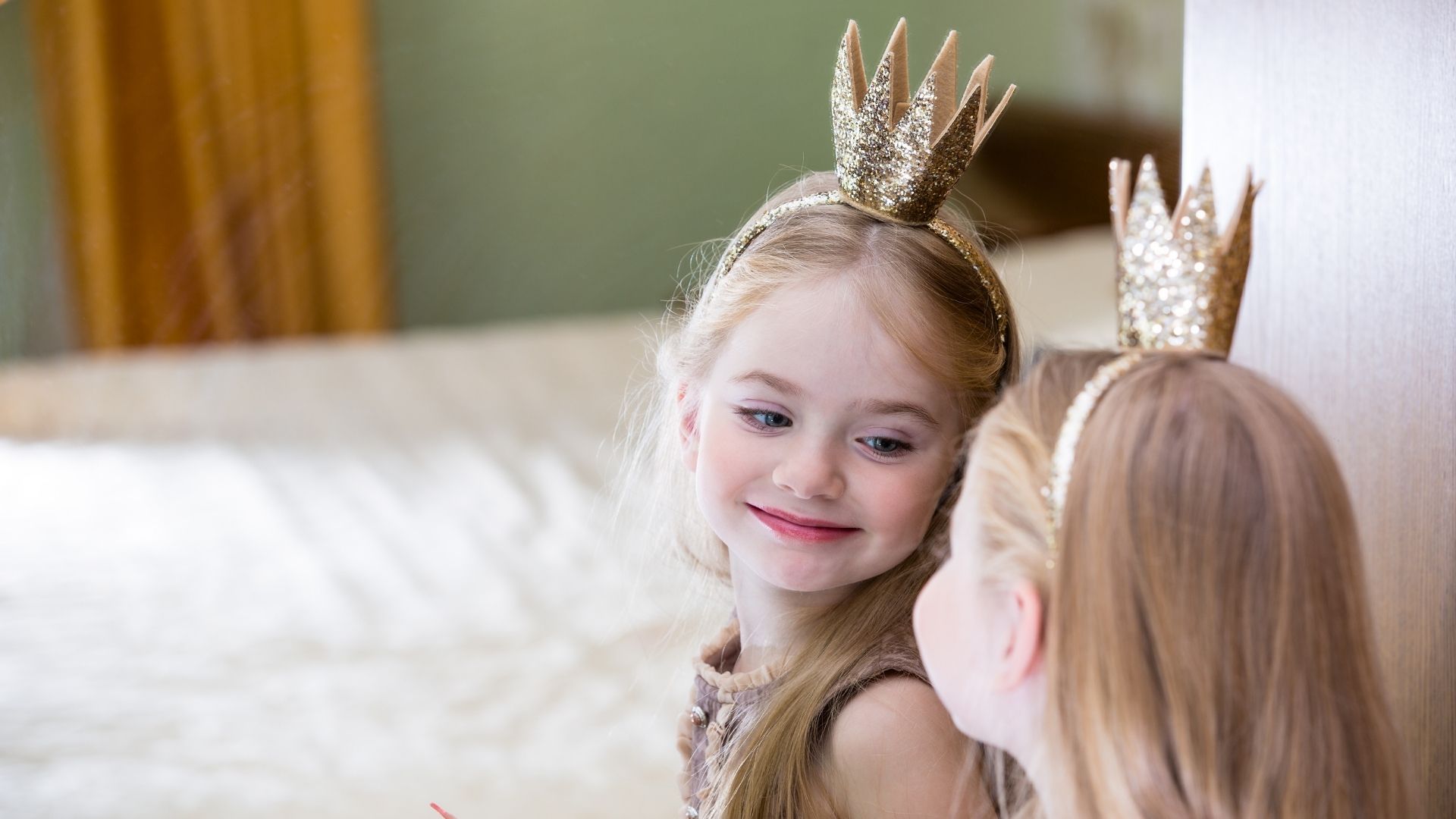Often one of the underlying causes of emotional and behavioral struggles is that who the child wants to be (their “ideal self”) is very different from who they are (their “actual self”). In this podcast exclusive, I share what happens in the playroom when a child is ready to bridge the gap between their actual and ideal self.
Podcast Transcript
Hi, I’m Dr. Brenna Hicks, founder of The Kid Counselor and Play Therapy Parenting. One of my favorite moments in the playroom is when a child watches him or herself in the mirror. And let me explain why. I realized that a lot of times parents don’t have the luxury of being in a play room with me and seeing the incredible things that I get to while we’re doing play therapy in there. So I’m trying to share some stories from the playroom so that you get a good glimpse into what a day in the life of a play therapist looks like.
I have a pretty large mirror in my playroom and I have dress up clothes and weapons and helmets and masks and just things that allow a child to become someone else for a moment. And that is such a powerful thing when a child puts on another self. But what’s even more powerful is when they watch themselves in the mirror as this other person. And here’s why – kids have to see themselves in a different context and in a different light before they can change who they currently are.
Another way that I describe that when I meet with parents at my office is we all have an actual self and an ideal self. Our actual self is who we really are right now and then our ideal self is someone who is very generous, very intelligent, very friendly, very helpful, whatever that may look like. It’s going to be different for every person – kids, too. So when you have ideal self so far away from actual self, the gap becomes too far to bridge and a child has to figure out how to get from actual self to ideal self before they can make that happen in the real world.
And the playroom is where that plan is formulated. One of the ways that they formulate that plan is by dressing up as somebody else, putting on a persona of someone else, taking on a role of someone else and seeing what it feels like. It’s putting on a different identity to test it. And it doesn’t usually happen in the beginning of treatment that they will look at themselves in the mirror because they’re not ready to see themselves differently yet. But eventually kids will stop and pause and look at themselves while they’re talking, while they’re acting out, while they’re conversing about the scene, the scene that they’ve created in play – and I literally can watch a transformation take place.
When it clicks, they see themselves in the mirror and it’s almost an “Aha” moment for them where they get a glimpse of being somebody different. Here’s the thing – kids cannot go from their current identity and label to someone completely differently just because they want to. If a child has been branded as the bad kid for days, months, weeks, years, they can’t wake up one morning and decide “I’m going to be the good kid from now on.” It doesn’t work that way. There has to be a process and there has to be a plan and they have to see how to go from the bad kid to the good kid. How do I change my actual self into something that looks more like my ideal self? I have to sort that out through play. I have to practice it. I have to plan, I have to test it. I have to see how it works. See what it feels like. I have to sit in that moment with this new persona until it feels comfortable.
One of the ways that they do that is when they watch themselves in the mirror and they decide, “I’m capable of being strong. I’m capable of being brave. I can do the right thing. I can be obedient. I want to be helpful. I want to listen. I want to stay in control and manage my emotions effectively.” And they see it in the reflection and decide that it’s possible.
It’s such an incredible job that I have! Such an incredible thing to witness when I sit there and I watch kids unfold into a better version of themselves and a happier and a healthier version of the child that came in before they saw that different reflection in the mirror.
Please sign up for my email newsletter, please like me on Facebook and subscribe to my iTunes podcast so that you get all of the training that I’m happy to offer you when I’m able to. I look forward to seeing you again soon. Thanks for watching. Bye.
Rate, Review, & Subscribe in Apple Podcast
‘Dr. Brenna gives great parenting tips!’ <– If that sounds like something you’d say, please consider rating and reviewing my show! Your ratings and reviews helps my podcast reach more people, inspiring them to build better relationships with their kids. Click here, (you need to be in your Apple Podcast app) scroll to the bottom, tap to rate with five stars, and select “Write a Review.” Then be sure to let me know what you thought about the episode!
Also, if you haven’t done so already, subscribe to the podcast. I periodically add bonus episodes to the feed and, if you’re not subscribed, there’s a good chance you’ll miss out. Subscribe now!

